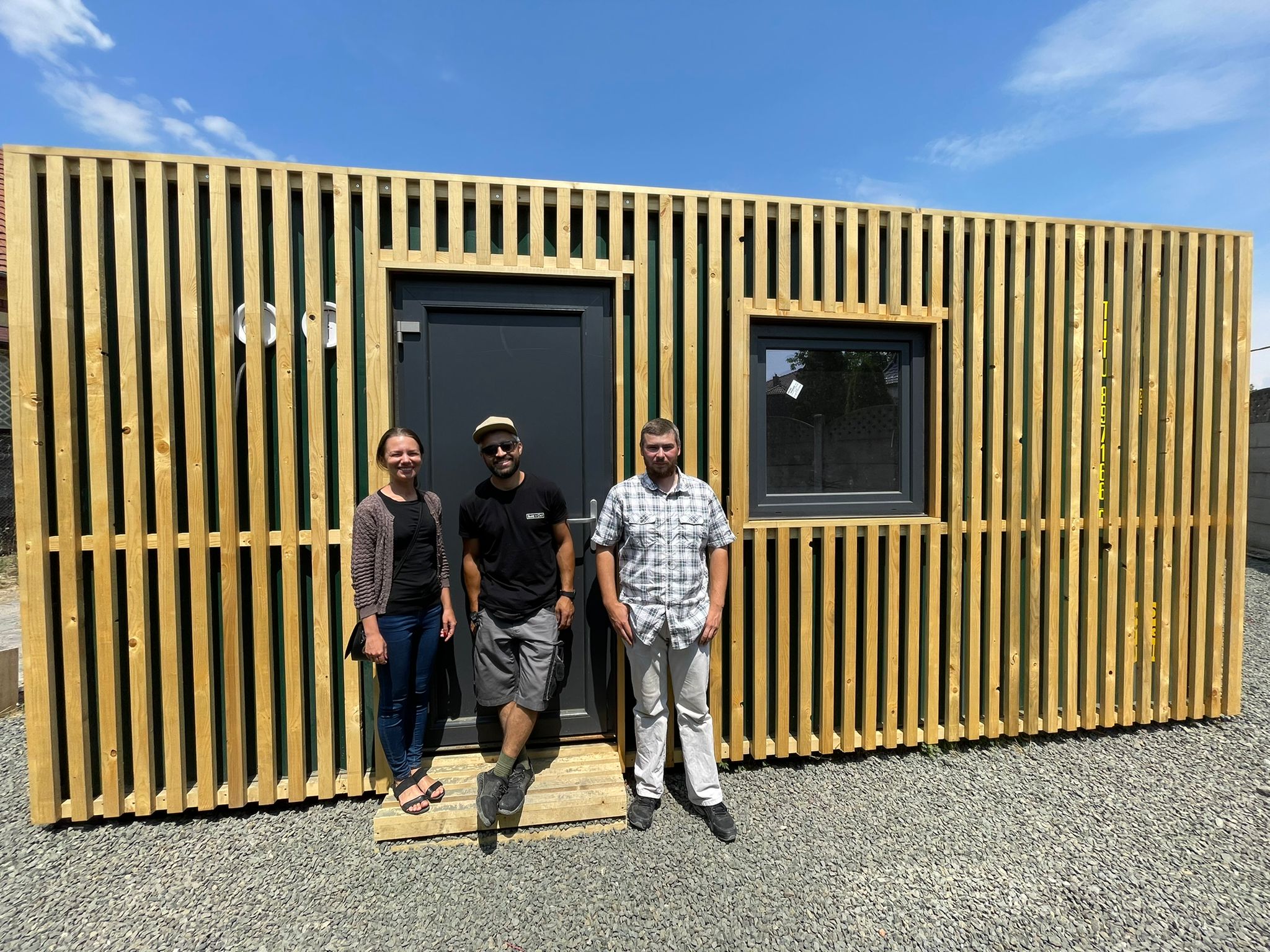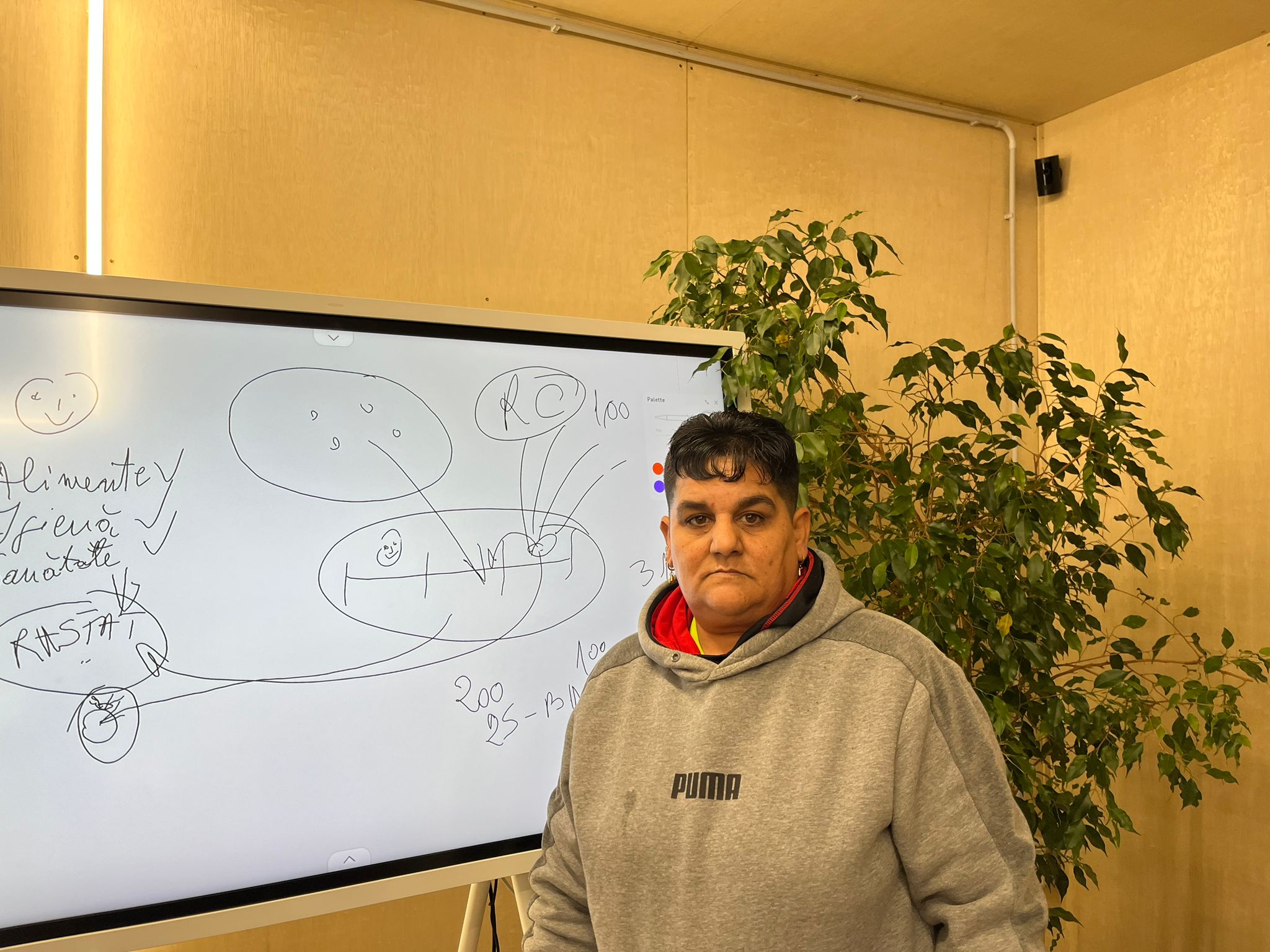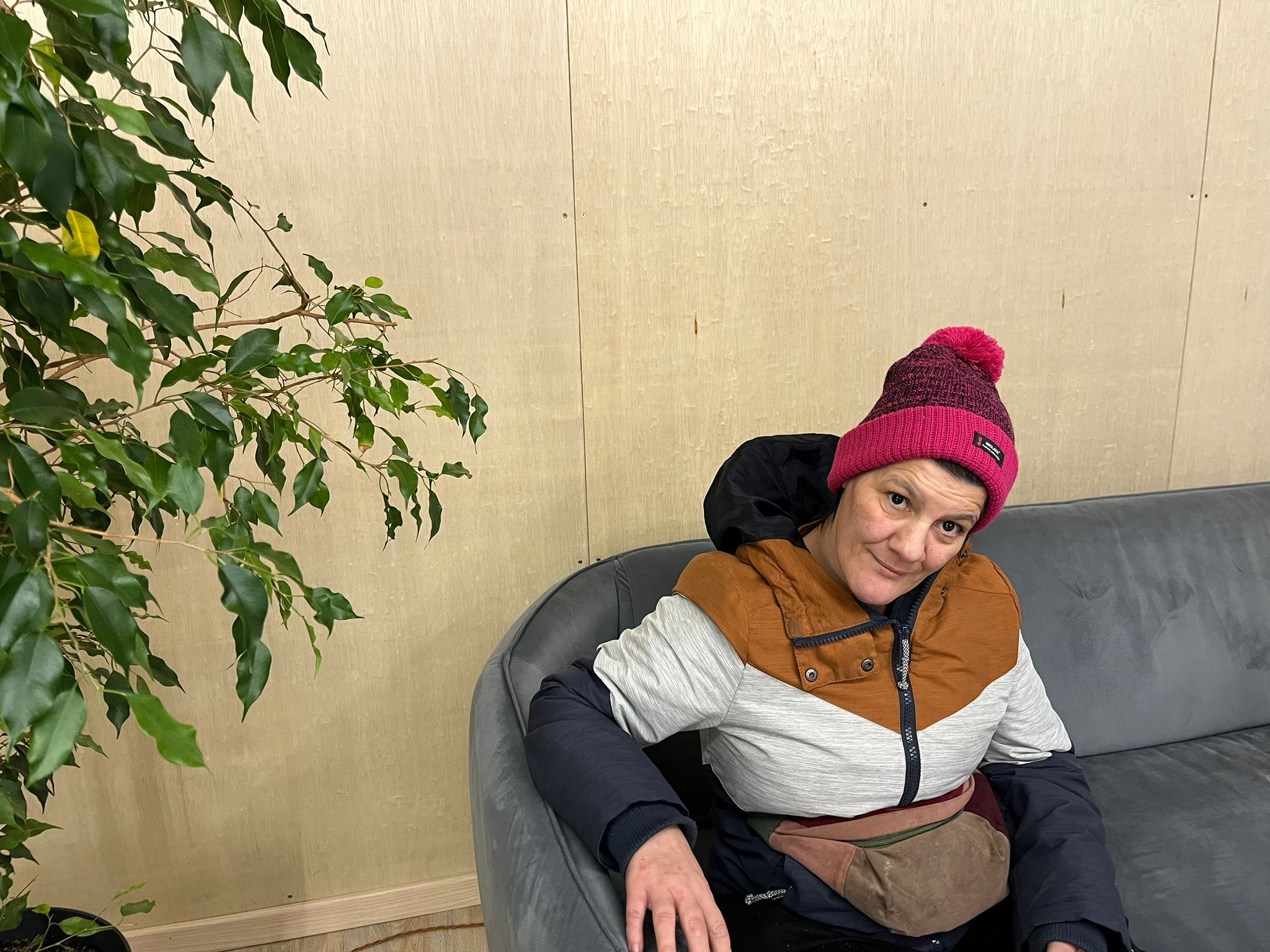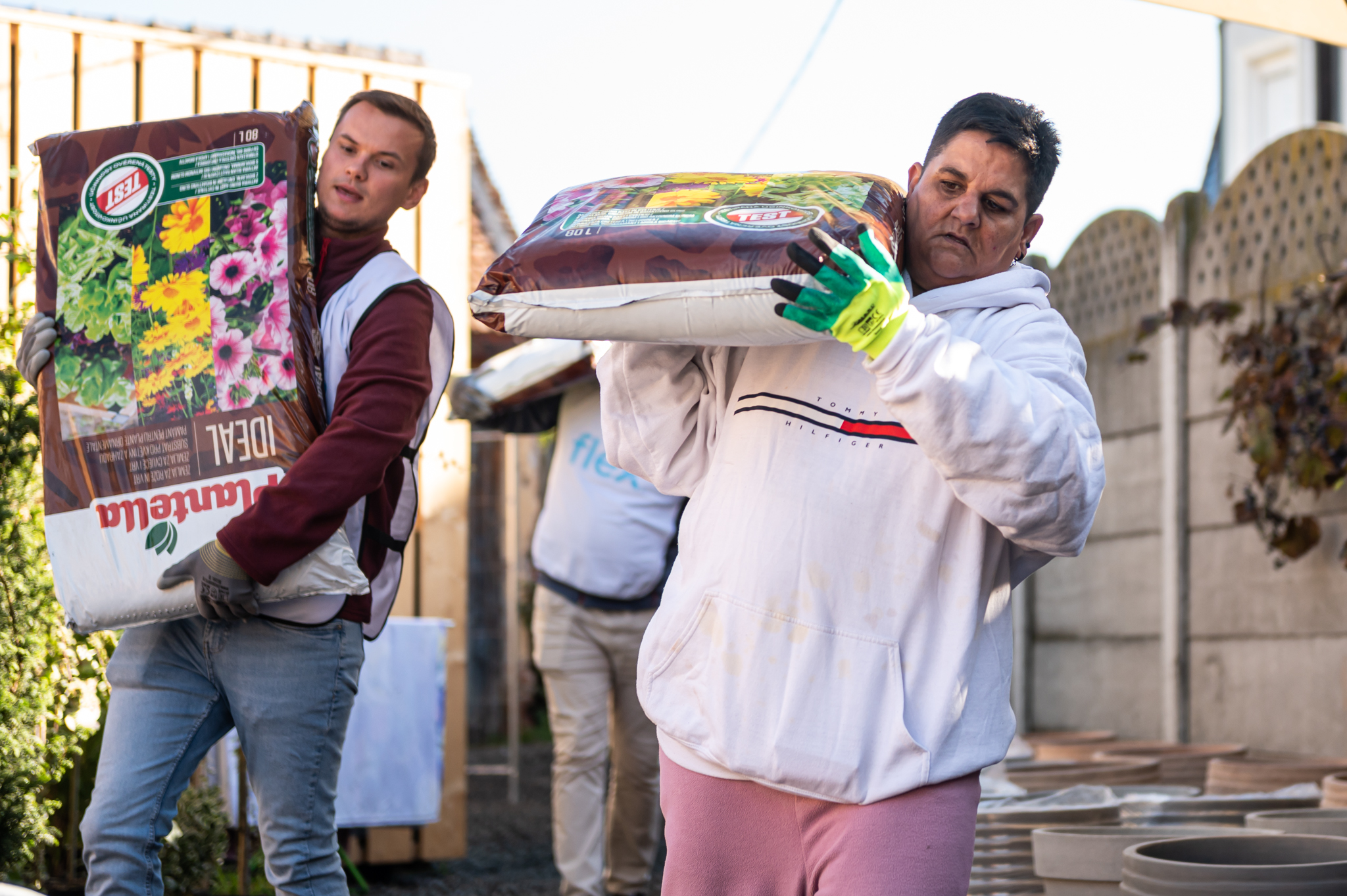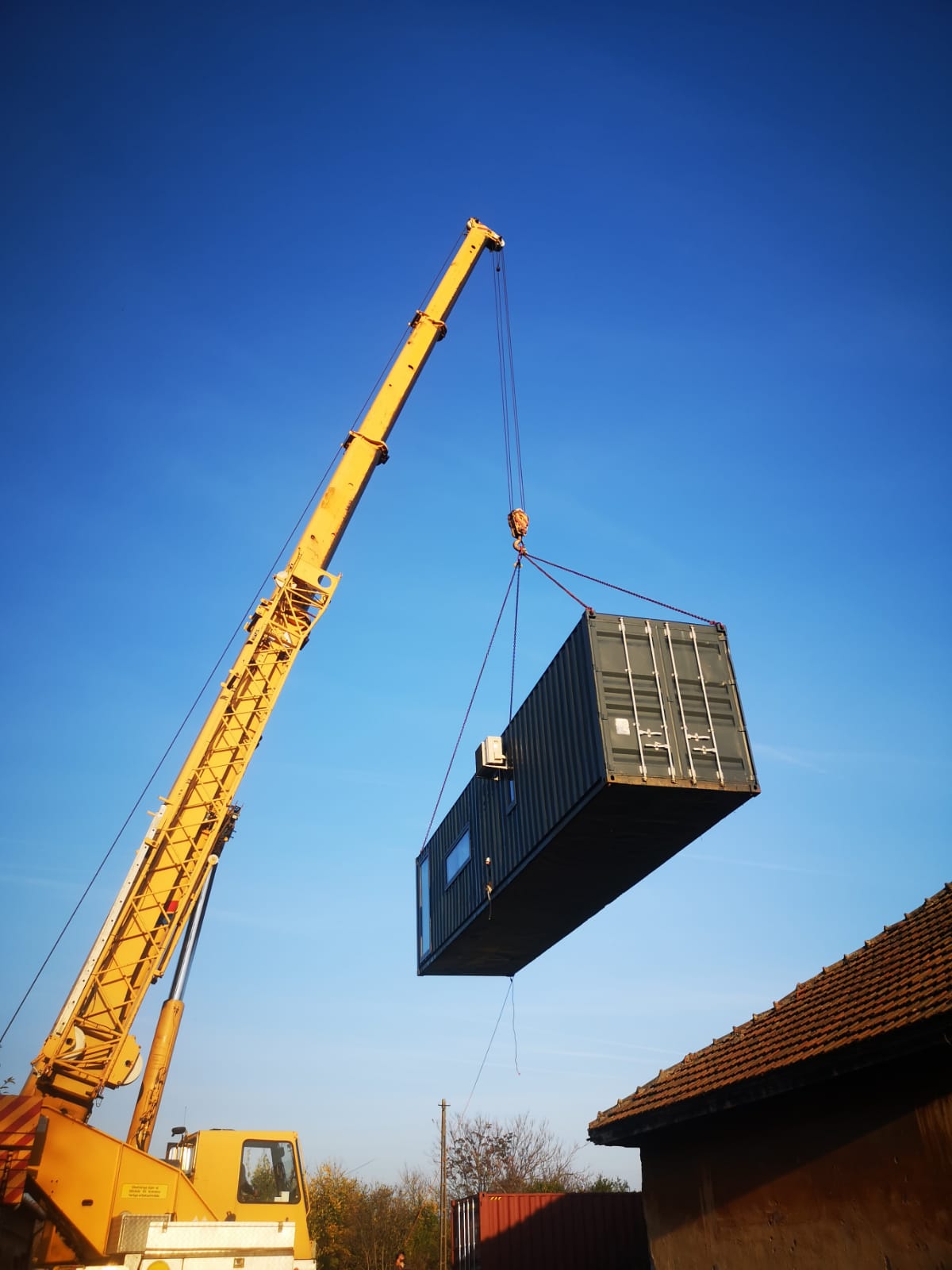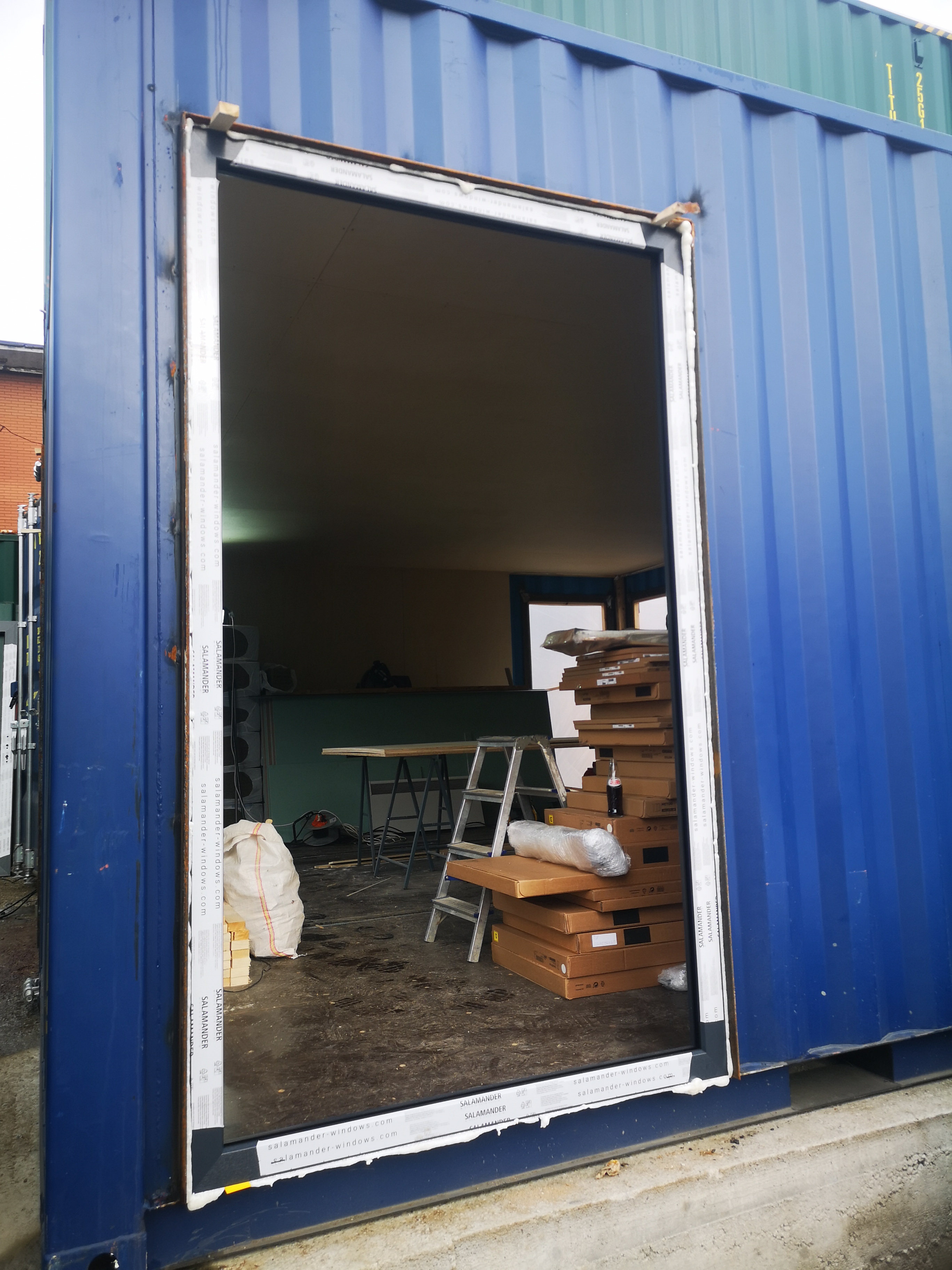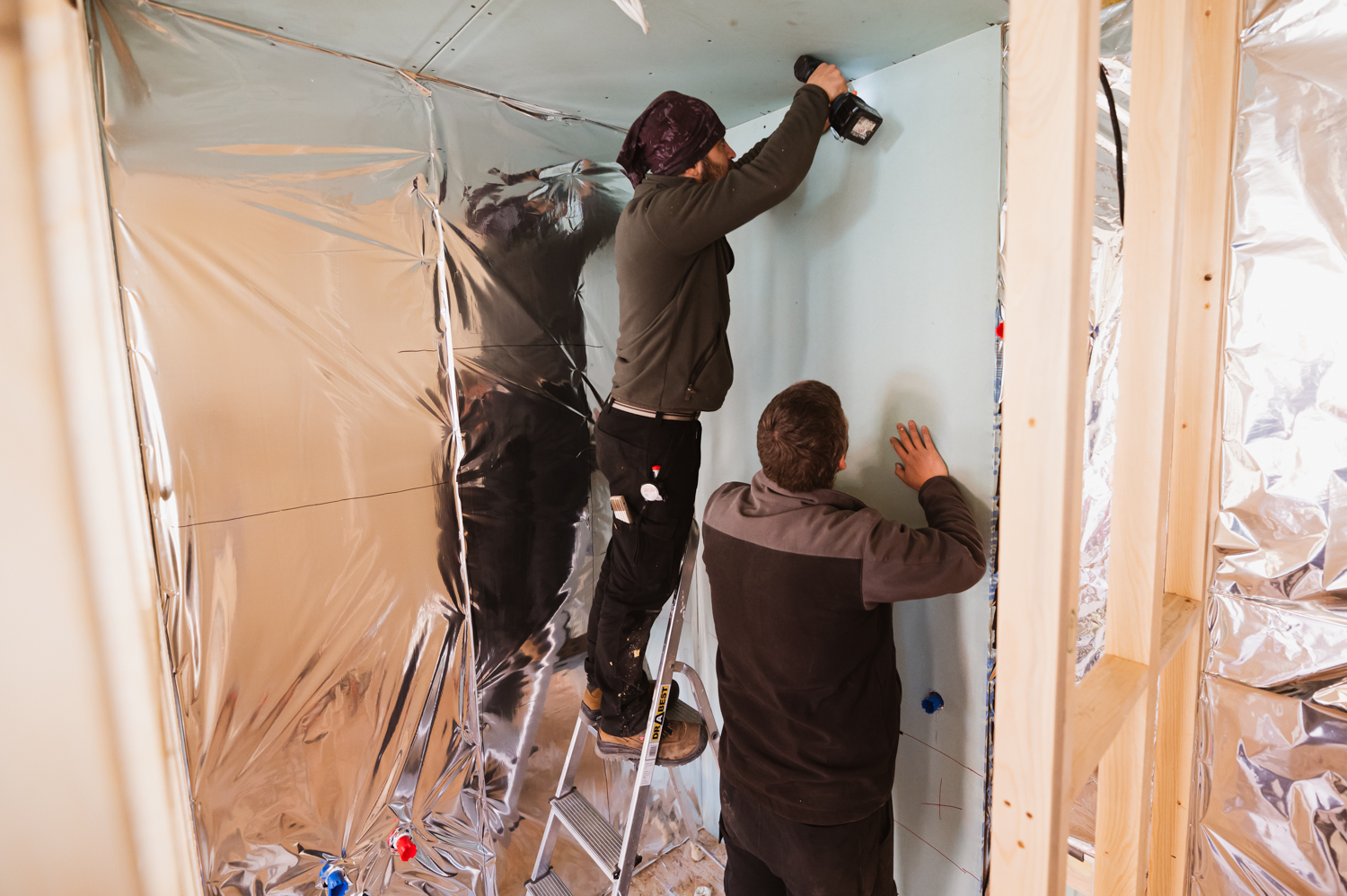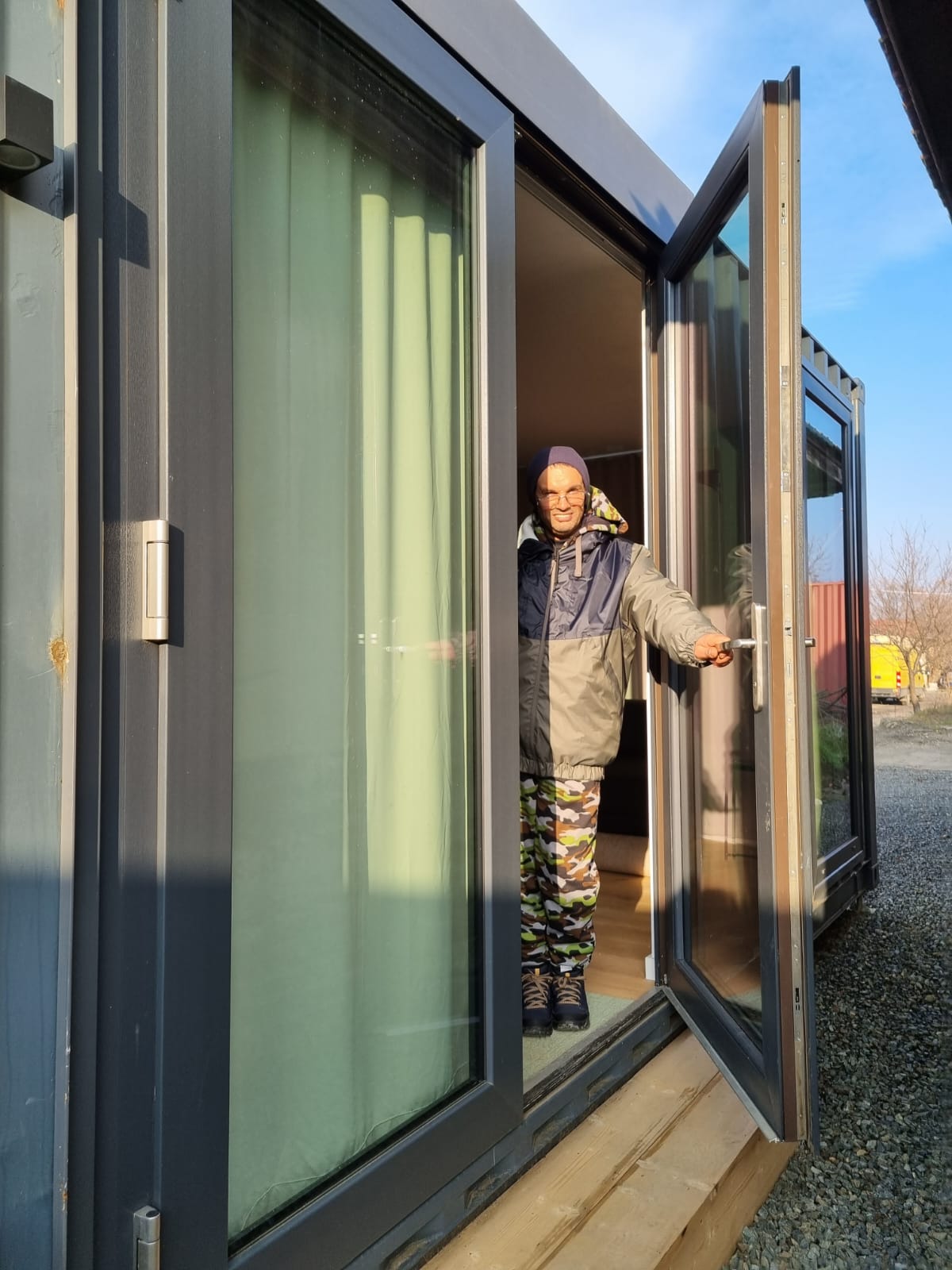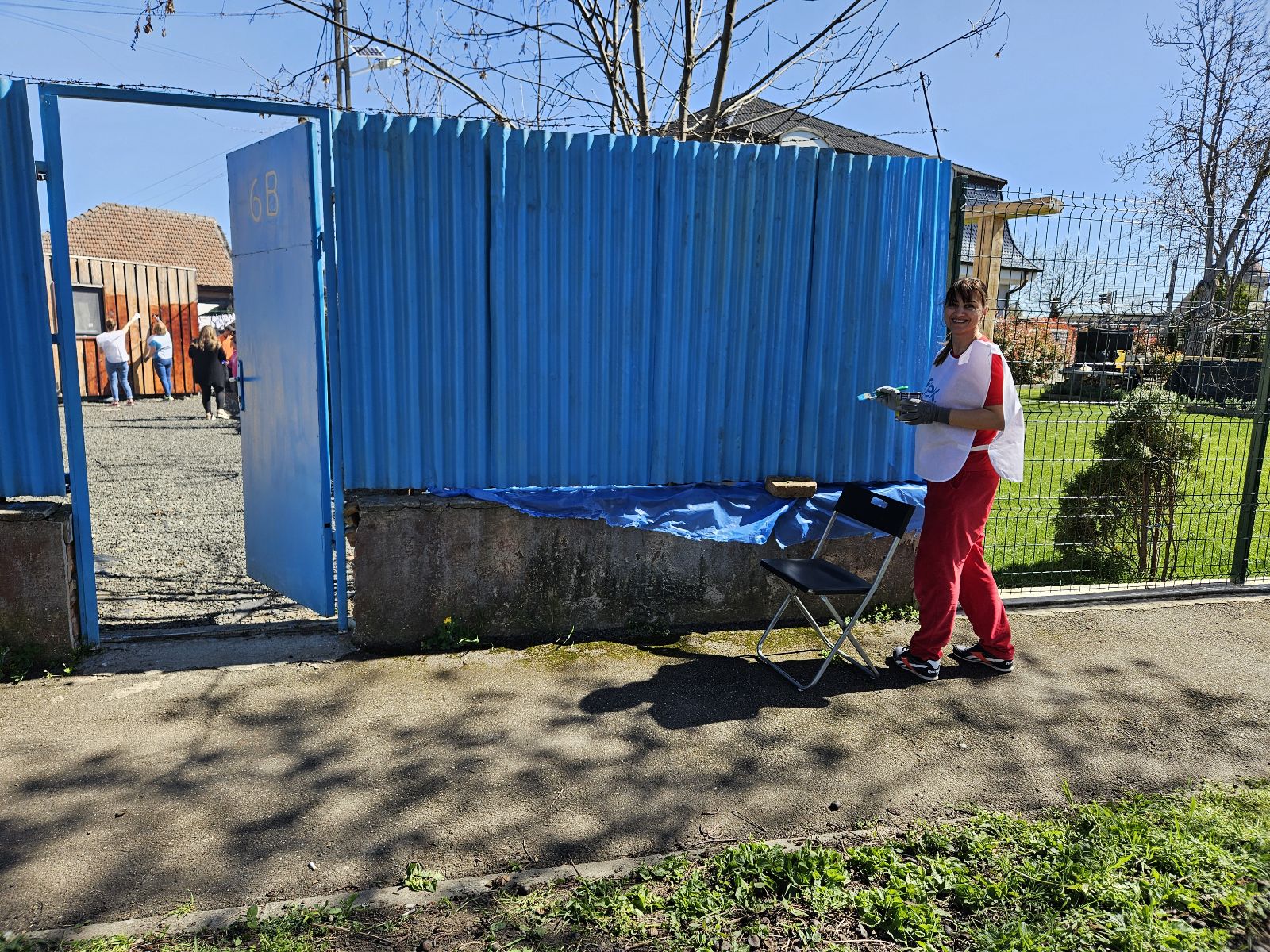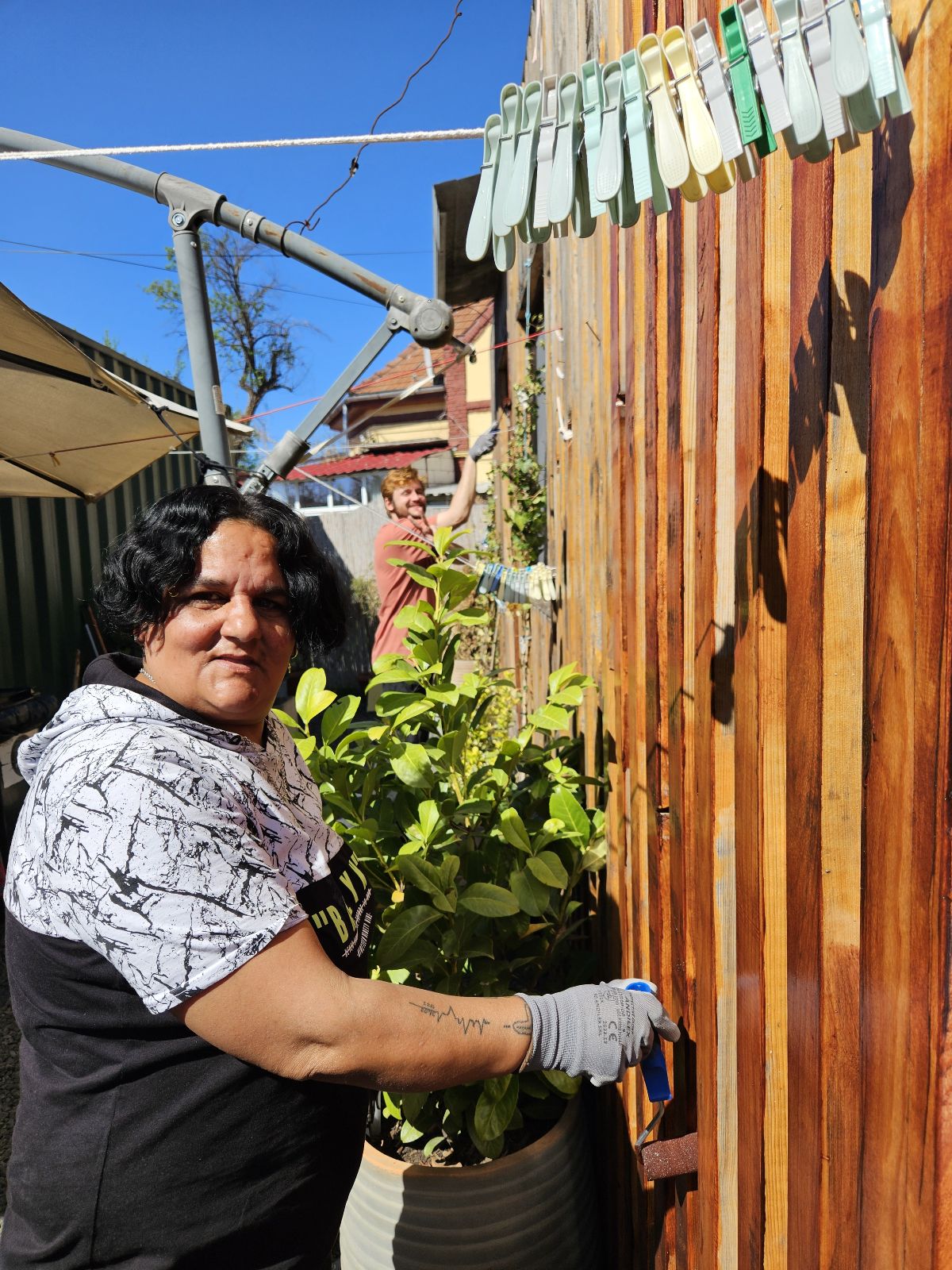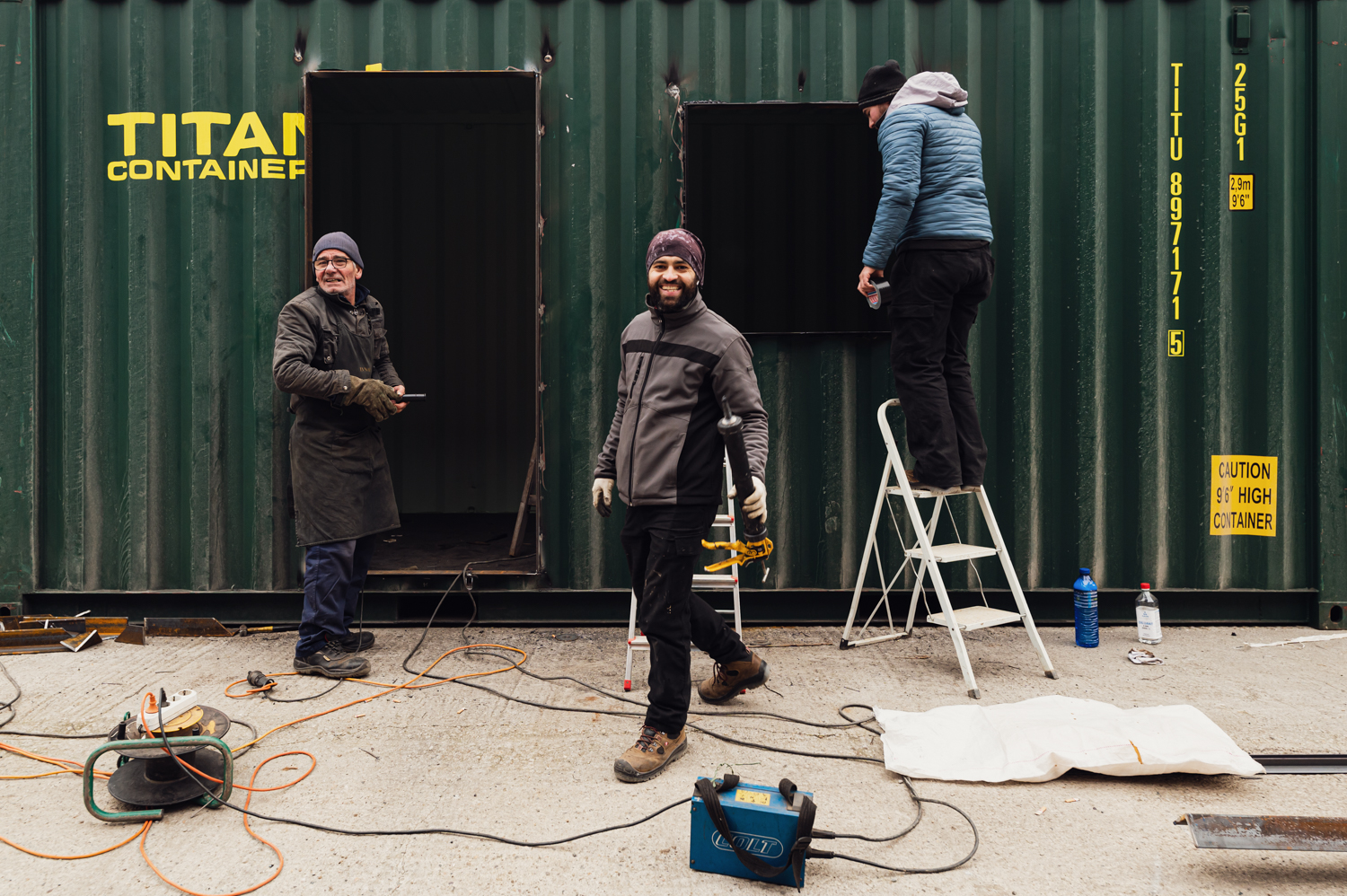Prioritising the places and people that need it the most
building.a.home
building.a.home: inclusive housing for persons with disabilities
b.a.h. transforms used shipping containers into sustainable, affordable homes for people with disabilities who lived in institutions. By repurposing unused public spaces, it offers dignity and social inclusion. This inspiring, scalable, eco-friendly model proves that housing can be innovative and community-driven—empowering vulnerable individuals while promoting circular economy. It can benefit the almost 900000 Romanians with disabilities (16000 still institutionalized in segregated centers).
Romania
Local
Timisoara
Mainly urban
It refers to a physical transformation of the built environment (hard investment)
Yes
2024-12-20
No
No
Yes
Yes
Yes
As a representative of an organisation, in partnership with other organisations
b.a.h. is an innovative housing initiative, transforming used shipping containers into sustainable, dignified homes for adults with disabilities who experienced institutionalization. By repurposing unused public spaces, it creates an alternative to institutional care.
Target groups: (1) adults with disabilities, mainly those transitioning from institutional settings to independent life; (2) individuals in vulnerable situations (exclusion, poverty).
Objectives: (1) facilitating independent living by providing stable housing, enabling residents to develop a sense of ownership over their lives; (2) enhancing social inclusion, by creating a community-integrated living model; (3) sustainable housing solutions, by utilizing circular economy principles by repurposing shipping containers into eco-friendly homes; (4) advocacy for deinstitutionalization, by demonstrating an alternative to segregated institutional care, influencing social housing policies.
Outcomes and impact: successfully provided housing for three former institutionalized individuals; developed a replicable model supported by the local authority; raised awareness on the challenges of deinstitutionalization, advocating for community-based care; strengthened collaboration (CSOs, local governments, companies).
Alignment with NEB values and working principles: sustainability and affordability (it upcycles shipping containers, reducing waste and carbon footprint); aesthetics and well-being (warm, functional, and human-centered homes, adaptable interiors, community spaces that enhance residents’ quality of life); inclusion and participation (co-design of living spaces, autonomy and community engagement).
Key social challenges: exclusion of disabled individuals from mainstream housing, offering an alternative to institutionalization; community based lack usage of abandoned public spaces. b.a.h. provides housing and reshapes how vulnerable persons are integrated in society: dignified living, accessible to all.
Target groups: (1) adults with disabilities, mainly those transitioning from institutional settings to independent life; (2) individuals in vulnerable situations (exclusion, poverty).
Objectives: (1) facilitating independent living by providing stable housing, enabling residents to develop a sense of ownership over their lives; (2) enhancing social inclusion, by creating a community-integrated living model; (3) sustainable housing solutions, by utilizing circular economy principles by repurposing shipping containers into eco-friendly homes; (4) advocacy for deinstitutionalization, by demonstrating an alternative to segregated institutional care, influencing social housing policies.
Outcomes and impact: successfully provided housing for three former institutionalized individuals; developed a replicable model supported by the local authority; raised awareness on the challenges of deinstitutionalization, advocating for community-based care; strengthened collaboration (CSOs, local governments, companies).
Alignment with NEB values and working principles: sustainability and affordability (it upcycles shipping containers, reducing waste and carbon footprint); aesthetics and well-being (warm, functional, and human-centered homes, adaptable interiors, community spaces that enhance residents’ quality of life); inclusion and participation (co-design of living spaces, autonomy and community engagement).
Key social challenges: exclusion of disabled individuals from mainstream housing, offering an alternative to institutionalization; community based lack usage of abandoned public spaces. b.a.h. provides housing and reshapes how vulnerable persons are integrated in society: dignified living, accessible to all.
inclusive housing
social integration
circular economy
sustainability
deinstitutionalization
b.a.h. integrates environmental, social and economic sustainability, while offering a replicable model for inclusive, community-driven, affordable and socially transformative housing.
1. Environmental: repurposes used shipping containers into nice homes, minimizing waste and resource consumption. Achievements: out-of-use containers became modular housing, extending their lifecycle and reducing construction waste; used low-carbon, non-toxic, and energy-efficient materials, reducing the overall environmental footprint; integrated thermal insulation; design for potential solar energy integration.
2. Social: long-term social inclusion via stable, community-integrated housing for vulnerable individuals, ensuring autonomy and dignity. Achievements: homes for individuals transitioning from institutional care; social interaction, reduced isolation, fostering community-building; human-centered environment (residents participate in shaping their living spaces, enhancing well-being); strengthened advocacy efforts for deinstitutionalization, shifting public policies towards community-based solutions.
3. Economic: cost-effective, scalable housing solution, to be replicated in different communities and contexts. Achievements: affordable housing, faster to implement and cheaper than social housing; utility based design, minimizing living costs; public-private partnerships, NGO support and community funding to ensure viability; demonstrated how repurposed structures can provide low-cost (emergency and transitional) housing for other vulnerable groups.
Exemplary model: innovative use of resources and circular economy in action (transforms end-of-life shipping containers); replicable, adaptable and scalable; sustainability approach; dignified, person-centered design; community integration model, embedded within urban, social networks.
b.a.h. proves that affordable housing can be cost-effective and transformative without impacting quality, aesthetics, or inclusivity.
1. Environmental: repurposes used shipping containers into nice homes, minimizing waste and resource consumption. Achievements: out-of-use containers became modular housing, extending their lifecycle and reducing construction waste; used low-carbon, non-toxic, and energy-efficient materials, reducing the overall environmental footprint; integrated thermal insulation; design for potential solar energy integration.
2. Social: long-term social inclusion via stable, community-integrated housing for vulnerable individuals, ensuring autonomy and dignity. Achievements: homes for individuals transitioning from institutional care; social interaction, reduced isolation, fostering community-building; human-centered environment (residents participate in shaping their living spaces, enhancing well-being); strengthened advocacy efforts for deinstitutionalization, shifting public policies towards community-based solutions.
3. Economic: cost-effective, scalable housing solution, to be replicated in different communities and contexts. Achievements: affordable housing, faster to implement and cheaper than social housing; utility based design, minimizing living costs; public-private partnerships, NGO support and community funding to ensure viability; demonstrated how repurposed structures can provide low-cost (emergency and transitional) housing for other vulnerable groups.
Exemplary model: innovative use of resources and circular economy in action (transforms end-of-life shipping containers); replicable, adaptable and scalable; sustainability approach; dignified, person-centered design; community integration model, embedded within urban, social networks.
b.a.h. proves that affordable housing can be cost-effective and transformative without impacting quality, aesthetics, or inclusivity.
b.a.h. merges functionality with aesthetics to create a dignified and welcoming living environment for its residents. It redefines affordable housing by proving that sustainability and beauty can coexist, offering a model that enhances well-being, autonomy, and social integration.
Human-centered design and well-being: b.a.h. prioritizes comfort and personalization, ensuring that residents feel at home rather than in a temporary shelter (bright, open interiors for natural light, creating a sense of warmth and spaciousness despite the compact modular design; spatial planning to ensure accessibility and ease of movement; personalization options allow residents to adapt and decorate their homes according to their needs, ensuring ownership and emotional connection to their space).
Aesthetic integration with the surroundings: b.a.h. ensures that its design complements urban and natural environments, making it an addition to the community, especially considering the public-private partnership regulating the use of a public domain land for the project (natural materials such as wood paneling, soft textiles, and greenery create a warm, inviting atmosphere; green outdoor spaces with seating areas and community zones foster social interaction, relaxation, and a sense of belonging; various landscaping options, ensuring that each housing unit fits harmoniously within different urban and rural settings).
As a model of aesthetic and inclusive design, b.a.h blends sustainability with beauty, proving that eco-friendly housing doesn’t have to feel industrial or impersonal. It enhanced dignity and identity, ensuring that residents feel proud of their homes and included in the broader community, while setting a precedent for social housing, where affordability, aesthetics, and quality of life are equally prioritized.
Through its human-centered approach, b.a.h. transforms social housing into a source of empowerment, cultural integration, and emotional well-being.
Human-centered design and well-being: b.a.h. prioritizes comfort and personalization, ensuring that residents feel at home rather than in a temporary shelter (bright, open interiors for natural light, creating a sense of warmth and spaciousness despite the compact modular design; spatial planning to ensure accessibility and ease of movement; personalization options allow residents to adapt and decorate their homes according to their needs, ensuring ownership and emotional connection to their space).
Aesthetic integration with the surroundings: b.a.h. ensures that its design complements urban and natural environments, making it an addition to the community, especially considering the public-private partnership regulating the use of a public domain land for the project (natural materials such as wood paneling, soft textiles, and greenery create a warm, inviting atmosphere; green outdoor spaces with seating areas and community zones foster social interaction, relaxation, and a sense of belonging; various landscaping options, ensuring that each housing unit fits harmoniously within different urban and rural settings).
As a model of aesthetic and inclusive design, b.a.h blends sustainability with beauty, proving that eco-friendly housing doesn’t have to feel industrial or impersonal. It enhanced dignity and identity, ensuring that residents feel proud of their homes and included in the broader community, while setting a precedent for social housing, where affordability, aesthetics, and quality of life are equally prioritized.
Through its human-centered approach, b.a.h. transforms social housing into a source of empowerment, cultural integration, and emotional well-being.
b.a.h. is an innovative model of inclusive housing, ensuring accessibility, affordability and participation for excluded individuals from housing and community life.
1. Accessibility and universal design, adaptable to the evolving needs of its residents with disabilities: enables free movement, allows for customization based on residents’ changing needs, ensuring long-term usability and promoting autonomy.
2. Affordability: it fosters economic inclusion, providing a low-cost, decent housing solution for individuals at risk of exclusion due to poverty and lack of access to independent living. The repurposed shipping containers reduced construction expenses, the insulation minimizes living costs, the residents receive financial support, limiting their economic barriers.
3. Participatory and inclusive governance: ownership and autonomy by involving residents in decision-making. They co-design the living spaces and shared community areas, based on their identities and preferences. They receive community-based support, ensuring their voices are heard in policy discussions.
4. New societal model, challenging traditional institutional care with community-driven, deinstitutionalized scalable living alternative: its proves that individuals with disabilities can and should live in community, included in social and cultural life.
Exemplary model: replicable, scalable approach that can be expanded to other regions and vulnerable groups (refugees, homeless individuals, etc); empowers residents through choice and participation; blends affordability, accessibility, and environmental sustainability; proves that functional design can be beautiful, adaptable and empowering; moves beyond traditional social housing models (residents are active participants in shaping their living environment); proves that small, community-based living solutions are more effective than large-scale institutional facilities in fostering autonomy and well-being, essential for a more just society.
1. Accessibility and universal design, adaptable to the evolving needs of its residents with disabilities: enables free movement, allows for customization based on residents’ changing needs, ensuring long-term usability and promoting autonomy.
2. Affordability: it fosters economic inclusion, providing a low-cost, decent housing solution for individuals at risk of exclusion due to poverty and lack of access to independent living. The repurposed shipping containers reduced construction expenses, the insulation minimizes living costs, the residents receive financial support, limiting their economic barriers.
3. Participatory and inclusive governance: ownership and autonomy by involving residents in decision-making. They co-design the living spaces and shared community areas, based on their identities and preferences. They receive community-based support, ensuring their voices are heard in policy discussions.
4. New societal model, challenging traditional institutional care with community-driven, deinstitutionalized scalable living alternative: its proves that individuals with disabilities can and should live in community, included in social and cultural life.
Exemplary model: replicable, scalable approach that can be expanded to other regions and vulnerable groups (refugees, homeless individuals, etc); empowers residents through choice and participation; blends affordability, accessibility, and environmental sustainability; proves that functional design can be beautiful, adaptable and empowering; moves beyond traditional social housing models (residents are active participants in shaping their living environment); proves that small, community-based living solutions are more effective than large-scale institutional facilities in fostering autonomy and well-being, essential for a more just society.
b.a.h. was designed as a collaborative, community-driven initiative, involving residents, civil society, private sector and local authorities.
1. Direct involvement of beneficiaries, who co-designed their living spaces to create a sense of home. They participated in workshops and trainings (independent living skills, financial management), to manage life outside institutions and engaged in peer support activities, to navigate independent life and learn how to overcome potential misunderstandings. Impact: increased autonomy and confidence, reducing reliance on institutional care; sense of ownership; social support network development, reducing isolation.
2. Engagement of civil society, private sector and local authorities: disability NGOs and self-advocacy groups (Fundatia de Abilitare Speranta/UnLoc, Ceva de Spus) provided expertise on deinstitutionalization, disability rights and inclusion; volunteers contributed to construction, interior design, and community activities, strengthening public engagement; architects and cultural organizations (Diana Giurea, As. Centrul Cultural PLAI) ensured that aesthetic and cultural elements were integrated; local businesses and donors (Flex Foundation, Ursus, Timisoara Community Foundation, United Way Romania, Urban Spaces) provided financial support, building materials, pro-bono use of land; the local municipality secured long term free of charge usage of a previously abandoned plot of land. Impact: raised public awareness on inclusive housing; strengthened community ties; created a replicable model for social housing challenges.
3. Key elements citizen and civil society involvement: co-creation with beneficiaries (solutions designed with and for them, not imposed upon them); multi-stakeholder collaboration (NGOs, artists, businesses, municipality, volunteers); long-term sustainability (networks of support), proving that inclusive housing is not just about buildings—it’s about communities and long-term empowerment.
1. Direct involvement of beneficiaries, who co-designed their living spaces to create a sense of home. They participated in workshops and trainings (independent living skills, financial management), to manage life outside institutions and engaged in peer support activities, to navigate independent life and learn how to overcome potential misunderstandings. Impact: increased autonomy and confidence, reducing reliance on institutional care; sense of ownership; social support network development, reducing isolation.
2. Engagement of civil society, private sector and local authorities: disability NGOs and self-advocacy groups (Fundatia de Abilitare Speranta/UnLoc, Ceva de Spus) provided expertise on deinstitutionalization, disability rights and inclusion; volunteers contributed to construction, interior design, and community activities, strengthening public engagement; architects and cultural organizations (Diana Giurea, As. Centrul Cultural PLAI) ensured that aesthetic and cultural elements were integrated; local businesses and donors (Flex Foundation, Ursus, Timisoara Community Foundation, United Way Romania, Urban Spaces) provided financial support, building materials, pro-bono use of land; the local municipality secured long term free of charge usage of a previously abandoned plot of land. Impact: raised public awareness on inclusive housing; strengthened community ties; created a replicable model for social housing challenges.
3. Key elements citizen and civil society involvement: co-creation with beneficiaries (solutions designed with and for them, not imposed upon them); multi-stakeholder collaboration (NGOs, artists, businesses, municipality, volunteers); long-term sustainability (networks of support), proving that inclusive housing is not just about buildings—it’s about communities and long-term empowerment.
1. Local level:
a. Disability and self-advocacy NGOs: expertise, alignment with best practices for independent living. Added value: b.a.h. is not just housing, but a holistic model for empowerment and accessible housing.
b. Volunteers, community members: construction, interior design and community-building activities, creating a supportive social network. Added value: strengthened public engagement and awareness, making the broader community an active participant in social inclusion.
c. Architects and cultural organizations: ensured that the homes are dignified, welcomin, and visually integrated into the urban landscape. Added value: showcased how design and sustainability can enhance the quality of life in social housing, challenging the institutional model.
d. Local businesses and donors: financial support, building materials, pro-bono use of land, reducing the financial burden. Added value: economic sustainability, demonstrating how private-sector involvement can drive social innovation.
e. Local municipality: secured the usage of a previously abandoned plot of public land, enabling the project to move forward. Added value: established public-sector support for deinstitutionalization efforts, showcasing how local governance can be an enabler of social change.
2. Regional and national level:
a. Ministry of Labor and Social Affairs, of Development: facilitated discussions on understanding the model. Added value: potential future replication.
b. Corporate donors: funding for financial sustainability and proper maintenance (Raiffeisen Bank). Added value: demonstrated the power of cross-sector collaboration.
3. European and international level: alignment with the New European Bauhaus (NEB) principles and EU agenda on social inclusion and sustainability.
a. Inclusion Europe: highlighted the project as an alternative model for inclusive housing. Added value: strengthened EU-wide advocacy for deinstitutionalization, on social housing and circular economy.
a. Disability and self-advocacy NGOs: expertise, alignment with best practices for independent living. Added value: b.a.h. is not just housing, but a holistic model for empowerment and accessible housing.
b. Volunteers, community members: construction, interior design and community-building activities, creating a supportive social network. Added value: strengthened public engagement and awareness, making the broader community an active participant in social inclusion.
c. Architects and cultural organizations: ensured that the homes are dignified, welcomin, and visually integrated into the urban landscape. Added value: showcased how design and sustainability can enhance the quality of life in social housing, challenging the institutional model.
d. Local businesses and donors: financial support, building materials, pro-bono use of land, reducing the financial burden. Added value: economic sustainability, demonstrating how private-sector involvement can drive social innovation.
e. Local municipality: secured the usage of a previously abandoned plot of public land, enabling the project to move forward. Added value: established public-sector support for deinstitutionalization efforts, showcasing how local governance can be an enabler of social change.
2. Regional and national level:
a. Ministry of Labor and Social Affairs, of Development: facilitated discussions on understanding the model. Added value: potential future replication.
b. Corporate donors: funding for financial sustainability and proper maintenance (Raiffeisen Bank). Added value: demonstrated the power of cross-sector collaboration.
3. European and international level: alignment with the New European Bauhaus (NEB) principles and EU agenda on social inclusion and sustainability.
a. Inclusion Europe: highlighted the project as an alternative model for inclusive housing. Added value: strengthened EU-wide advocacy for deinstitutionalization, on social housing and circular economy.
b.a.h. results of collaboration across multiple disciplines, integrating architecture, social sciences, sustainability, urban planning, disability rights, and community development. This multifaceted approach ensured that the project was structurally sound, socially impactful, environmentally sustainable, and financially viable.
1. Architecture and urban planning: led by architects and designers, ensuring that the housing units are functional, accessible, and aesthetically pleasing, considered the integration of the homes into urban and natural environments, promoting harmony with the community.
2. Social sciences and disability advocacy: NGOs and disability rights experts contributed with their knowledge and hands on support on deinstitutionalization, accessibility, and social inclusion.
3. Sustainability and circular economy: the project followed circular economy principles, repurposing shipping containers into housing, reducing environmental impact.
4. Community development and participatory design: engaged future residents in co-designing their living spaces, ensuring they reflected personal needs and preferences. Included volunteers, artists, and cultural organizations to create warm, welcoming, and inclusive environments.
5. Public policy: collaborated with the municipality to secure land and long-term sustainability, turning an underutilized space into a meaningful project, setting an example for future urban regeneration efforts, showcasing its commitment to social inclusion and set a precedent for others.
This interdisciplinary approach lead to holistic solutions (addressing both physical and social needs, ensuring that the project is functional, empowering, and sustainable), stronger community impact (by integrating different expertise, b.a.h. fosters not just housing, but a model for social inclusion), scalability and replicability (the interdisciplinary nature makes the project adaptable to different contexts and expandable on a larger scale).
1. Architecture and urban planning: led by architects and designers, ensuring that the housing units are functional, accessible, and aesthetically pleasing, considered the integration of the homes into urban and natural environments, promoting harmony with the community.
2. Social sciences and disability advocacy: NGOs and disability rights experts contributed with their knowledge and hands on support on deinstitutionalization, accessibility, and social inclusion.
3. Sustainability and circular economy: the project followed circular economy principles, repurposing shipping containers into housing, reducing environmental impact.
4. Community development and participatory design: engaged future residents in co-designing their living spaces, ensuring they reflected personal needs and preferences. Included volunteers, artists, and cultural organizations to create warm, welcoming, and inclusive environments.
5. Public policy: collaborated with the municipality to secure land and long-term sustainability, turning an underutilized space into a meaningful project, setting an example for future urban regeneration efforts, showcasing its commitment to social inclusion and set a precedent for others.
This interdisciplinary approach lead to holistic solutions (addressing both physical and social needs, ensuring that the project is functional, empowering, and sustainable), stronger community impact (by integrating different expertise, b.a.h. fosters not just housing, but a model for social inclusion), scalability and replicability (the interdisciplinary nature makes the project adaptable to different contexts and expandable on a larger scale).
b.a.h. redefines social housing and deinstitutionalization by integrating sustainability, affordability, and social inclusion into a replicable and scalable model. Key innovations:
1. Alternative to institutionalization: instead of placing individuals in segregated care facilities, b.a.h. offers a flexible, self-sustaining solution. Traditional deinstitutionalization still relies on group homes, whereas b.a.h. empowers individuals in fully independent settings.
2. Upcycling and circular economy in social housing: b.a.h. repurposes shipping containers to create homes, demonstrating how upcycling can be a viable housing solution. It minimizes construction waste, reduces carbon footprint, and extends the lifecycle of industrial materials. Most low-cost housing models neglect sustainability, but b.a.h. integrates green building practices.
3. Human-centered and participatory design: traditional housing for vulnerable individuals often lacks personalization and emotional connection. b.a.h. involves residents in designing and adapting their homes, combining functional design with aesthetics, proving that affordable housing doesn’t have to be sterile or impersonal.
4. A scalable model for different social and urban contexts: b.a.h. can be implemented in both urban and rural settings, the modular design allows for expansion, reconfiguration, and adaptation. It can be replicated for other vulnerable groups. Most social housing initiatives are location-specific and difficult to scale, while b.a.h. offers a flexible, modular system that can be replicated anywhere.
5. Beyond shelter, fostering identity, empowerment and cultural integration: it integrates art, green spaces, and community engagement, fostering a sense of identity and belonging. The collaboration with architects, designers, and cultural organizations ensures that the homes are not just functional, but also dignified and inspiring places to live, in a culturally meaningful and socially engaging initiative.
1. Alternative to institutionalization: instead of placing individuals in segregated care facilities, b.a.h. offers a flexible, self-sustaining solution. Traditional deinstitutionalization still relies on group homes, whereas b.a.h. empowers individuals in fully independent settings.
2. Upcycling and circular economy in social housing: b.a.h. repurposes shipping containers to create homes, demonstrating how upcycling can be a viable housing solution. It minimizes construction waste, reduces carbon footprint, and extends the lifecycle of industrial materials. Most low-cost housing models neglect sustainability, but b.a.h. integrates green building practices.
3. Human-centered and participatory design: traditional housing for vulnerable individuals often lacks personalization and emotional connection. b.a.h. involves residents in designing and adapting their homes, combining functional design with aesthetics, proving that affordable housing doesn’t have to be sterile or impersonal.
4. A scalable model for different social and urban contexts: b.a.h. can be implemented in both urban and rural settings, the modular design allows for expansion, reconfiguration, and adaptation. It can be replicated for other vulnerable groups. Most social housing initiatives are location-specific and difficult to scale, while b.a.h. offers a flexible, modular system that can be replicated anywhere.
5. Beyond shelter, fostering identity, empowerment and cultural integration: it integrates art, green spaces, and community engagement, fostering a sense of identity and belonging. The collaboration with architects, designers, and cultural organizations ensures that the homes are not just functional, but also dignified and inspiring places to live, in a culturally meaningful and socially engaging initiative.
b.a.h. uses an interdisciplinary approach to developing sustainable, inclusive and affordable housing for individuals transitioning from institutional care. The methodology integrates social, environmental, and economic principles:
1. Human-centered and participatory design: residents actively involved in co-designing their living spaces; design prioritizes functionality and emotional well-being;
regular workshops and support for independent living. Effective approach, as it moves beyond one-size-fits-all social housing, creating tailored living solutions.
2. Circular economy and sustainable construction: uses upcycled shipping containers as modular housing units, reducing construction waste and material costs, ensures energy efficiency through thermal insulation and potential for solar energy integration.
3. Social inclusion and deinstitutionalization: transforms unused urban land into inclusive housing, promoting community integration rather than isolation; provides social and professional support, including financial literacy training and skills development, ensuring long-term self-sufficiency.
It replaces segregated housing models with fully integrated, community-based solutions that empower individuals.
4. Multi-stakeholder collaboration: partners with NGOs, local authorities, businesses, and cultural organizations to provide expertise, funding, and resources.
Encourages volunteer engagement, social responsibility and community awareness.
The local municipality provides land and policy support, ensuring long-term scalability and sustainability.
5. Scalability and replicability: the modular design allows for quick deployment and easy adaptation to different social, urban, and economic contexts and can be expanded to serve other vulnerable populations.
The b.a.h. methodology proves that inclusive and sustainable housing is achievable through innovation, collaboration, and human-centered design, by integrating circular economy principles.
1. Human-centered and participatory design: residents actively involved in co-designing their living spaces; design prioritizes functionality and emotional well-being;
regular workshops and support for independent living. Effective approach, as it moves beyond one-size-fits-all social housing, creating tailored living solutions.
2. Circular economy and sustainable construction: uses upcycled shipping containers as modular housing units, reducing construction waste and material costs, ensures energy efficiency through thermal insulation and potential for solar energy integration.
3. Social inclusion and deinstitutionalization: transforms unused urban land into inclusive housing, promoting community integration rather than isolation; provides social and professional support, including financial literacy training and skills development, ensuring long-term self-sufficiency.
It replaces segregated housing models with fully integrated, community-based solutions that empower individuals.
4. Multi-stakeholder collaboration: partners with NGOs, local authorities, businesses, and cultural organizations to provide expertise, funding, and resources.
Encourages volunteer engagement, social responsibility and community awareness.
The local municipality provides land and policy support, ensuring long-term scalability and sustainability.
5. Scalability and replicability: the modular design allows for quick deployment and easy adaptation to different social, urban, and economic contexts and can be expanded to serve other vulnerable populations.
The b.a.h. methodology proves that inclusive and sustainable housing is achievable through innovation, collaboration, and human-centered design, by integrating circular economy principles.
b.a.h. is a scalable, adaptable and sustainable model for inclusive housing, making it transferable to different locations, beneficiaries and socio-economic contexts. Its methodology and approach can be replicated by municipalities, NGOs, social enterprises and policymakers to create similar initiatives that empower individuals rather than just provide shelter.
1. Adaptability to different beneficiaries: designed for individuals with disabilities and institutional backgrounds, can be extended to homeless populations, offering a quick, cost-effective solution to homelessness, refugees and displaced persons, providing temporary or permanent housing in crisis situations, low-income families, young adults aging out of foster care.
2. Flexibility in urban and rural settings: b.a.h. works in both high-density urban settings and rural areas, offering quick deployment in cities, using underutilized public land for fast, modular social housing or integration into rural communities. The modular design allows scaling up or down.
3. Scalability and affordability: b.a.h. can be scaled based on funding availability and social needs, making it suitable for small-scale pilot projects, serving a few individuals as proof-of-concept, larger-scale community housing initiatives, adapted for municipal social housing programs or post-disaster or emergency relief housing, providing immediate shelter.
4. Integration into public housing and policy: b.a.h. serves as a pilot model for policy change, advocating for deinstitutionalization and community-based housing, influencing national and regional housing policies, public-private partnerships, social entrepreneurship initiatives, combining housing with employment and skills training.
5. Transferability to low-resource contexts: b.a.h. is particularly effective in regions with limited resources or high construction costs, like post-disaster recovery zones, informal settlements, providing a structured, legal, and sustainable alternatives.
1. Adaptability to different beneficiaries: designed for individuals with disabilities and institutional backgrounds, can be extended to homeless populations, offering a quick, cost-effective solution to homelessness, refugees and displaced persons, providing temporary or permanent housing in crisis situations, low-income families, young adults aging out of foster care.
2. Flexibility in urban and rural settings: b.a.h. works in both high-density urban settings and rural areas, offering quick deployment in cities, using underutilized public land for fast, modular social housing or integration into rural communities. The modular design allows scaling up or down.
3. Scalability and affordability: b.a.h. can be scaled based on funding availability and social needs, making it suitable for small-scale pilot projects, serving a few individuals as proof-of-concept, larger-scale community housing initiatives, adapted for municipal social housing programs or post-disaster or emergency relief housing, providing immediate shelter.
4. Integration into public housing and policy: b.a.h. serves as a pilot model for policy change, advocating for deinstitutionalization and community-based housing, influencing national and regional housing policies, public-private partnerships, social entrepreneurship initiatives, combining housing with employment and skills training.
5. Transferability to low-resource contexts: b.a.h. is particularly effective in regions with limited resources or high construction costs, like post-disaster recovery zones, informal settlements, providing a structured, legal, and sustainable alternatives.
b.a.h. addresses some of the most pressing global challenges by providing an innovative, localized approach to sustainable, inclusive and affordable housing, aligning with several SDGs.
1. Housing crisis and homelessness (SDG 11): millions face housing shortages, with social housing solutions being slow and often expensive. Vulnerable groups often lack access to stable, dignified housing. b.a.h. provides modular homes as an alternative to institutionalization and homelessness, transforming abandoned spaces into livable communities.
2. Social exclusion and deinstitutionalization (SDG 10): people with disabilities often face exclusion, and segregation. b.a.h. provides community-based living spaces, ensuring integration, promoting self-sufficiency via support programs and trainings, fostering autonomy and dignity.
3. Climate change and resource efficiency (SDG 12, SDG 13): the construction industry is responsible for massive carbon emissions, waste and resource usage. b.a.h. repurposes used shipping containers, minimizing waste and material consumption.
4. Economic inequality access to housing (SDG 1, SDG 8): traditional social housing models are expensive, slow to build, leaving vulnerable groups without adequate shelter.
b.a.h. offers a low-cost, quick-deployment housing model to be adapted to various contexts.
5. Urbanization and sustainable cities (SDG 11): as cities expand, housing solutions do not suffice, leading to overcrowding, homelessness, informal settlements.
b.a.h. uses modular housing to be rapidly deployed in urban/rural settings, can be scaled up or down, and promotes sustainable urban development by repurposing abandoned public spaces for housing.
Through human-centered design, sustainability principles, and cost-effective implementation, b.a.h. offers a solution to multiple global challenges. It proves that local action can drive systemic change for inclusive, climate-friendly and socially empowering housing solutions.
1. Housing crisis and homelessness (SDG 11): millions face housing shortages, with social housing solutions being slow and often expensive. Vulnerable groups often lack access to stable, dignified housing. b.a.h. provides modular homes as an alternative to institutionalization and homelessness, transforming abandoned spaces into livable communities.
2. Social exclusion and deinstitutionalization (SDG 10): people with disabilities often face exclusion, and segregation. b.a.h. provides community-based living spaces, ensuring integration, promoting self-sufficiency via support programs and trainings, fostering autonomy and dignity.
3. Climate change and resource efficiency (SDG 12, SDG 13): the construction industry is responsible for massive carbon emissions, waste and resource usage. b.a.h. repurposes used shipping containers, minimizing waste and material consumption.
4. Economic inequality access to housing (SDG 1, SDG 8): traditional social housing models are expensive, slow to build, leaving vulnerable groups without adequate shelter.
b.a.h. offers a low-cost, quick-deployment housing model to be adapted to various contexts.
5. Urbanization and sustainable cities (SDG 11): as cities expand, housing solutions do not suffice, leading to overcrowding, homelessness, informal settlements.
b.a.h. uses modular housing to be rapidly deployed in urban/rural settings, can be scaled up or down, and promotes sustainable urban development by repurposing abandoned public spaces for housing.
Through human-centered design, sustainability principles, and cost-effective implementation, b.a.h. offers a solution to multiple global challenges. It proves that local action can drive systemic change for inclusive, climate-friendly and socially empowering housing solutions.
1. Direct impact on beneficiaries: i. stable, independent living for formerly institutionalized individuals (homes for three at a time, six in total, persons with disabilities; contributed to their personal autonomy, developed independent living skills), ii. improved well-being and inclusion (residents experienced greater self-confidence, reduced isolation and stronger connections, while receiving access to employment opportunities, financial literacy training and community support); iii. long-term affordability and security (reduced financial burden for residents). Main outcome: a replicable deinstitutionalization model.
2. Broader social and policy impact: i. raised awareness on deinstitutionalization and inclusive housing; ii. increased public recognition of community-based housing models; iii. advocated for policy changes by demonstrating that deinstitutionalization is viable with the right support and infrastructure; iv. strong community involvement and multi-stakeholder collaboration (local authorities, NGOs, private donors, and citizens). Key outcome: a replicable, inspiring housing model.
3. Environmental and sustainability impact: i. circular economy in social housing (repurposed used shipping containers, reduced construction waste and carbon footprint); ii. transforming underutilized urban spaces (turned a previously abandoned plot into a community-integrated living space, set a precedent for reuse of neglected urban areas). Key outcome: a scalable, environmentally responsible model that proves social housing can be both sustainable and cost-effective.
4. Scalability and future potential: i. feasibility for expansion (in urban and rural settings, it allows for quick expansion); ii. influence on housing policy and social innovation (inspired discussions on how municipalities can use public land for housing initiatives, showcased the role of cross-sector partnerships). Key outcome: a model for affordable, inclusive and sustainable social housing.
2. Broader social and policy impact: i. raised awareness on deinstitutionalization and inclusive housing; ii. increased public recognition of community-based housing models; iii. advocated for policy changes by demonstrating that deinstitutionalization is viable with the right support and infrastructure; iv. strong community involvement and multi-stakeholder collaboration (local authorities, NGOs, private donors, and citizens). Key outcome: a replicable, inspiring housing model.
3. Environmental and sustainability impact: i. circular economy in social housing (repurposed used shipping containers, reduced construction waste and carbon footprint); ii. transforming underutilized urban spaces (turned a previously abandoned plot into a community-integrated living space, set a precedent for reuse of neglected urban areas). Key outcome: a scalable, environmentally responsible model that proves social housing can be both sustainable and cost-effective.
4. Scalability and future potential: i. feasibility for expansion (in urban and rural settings, it allows for quick expansion); ii. influence on housing policy and social innovation (inspired discussions on how municipalities can use public land for housing initiatives, showcased the role of cross-sector partnerships). Key outcome: a model for affordable, inclusive and sustainable social housing.

